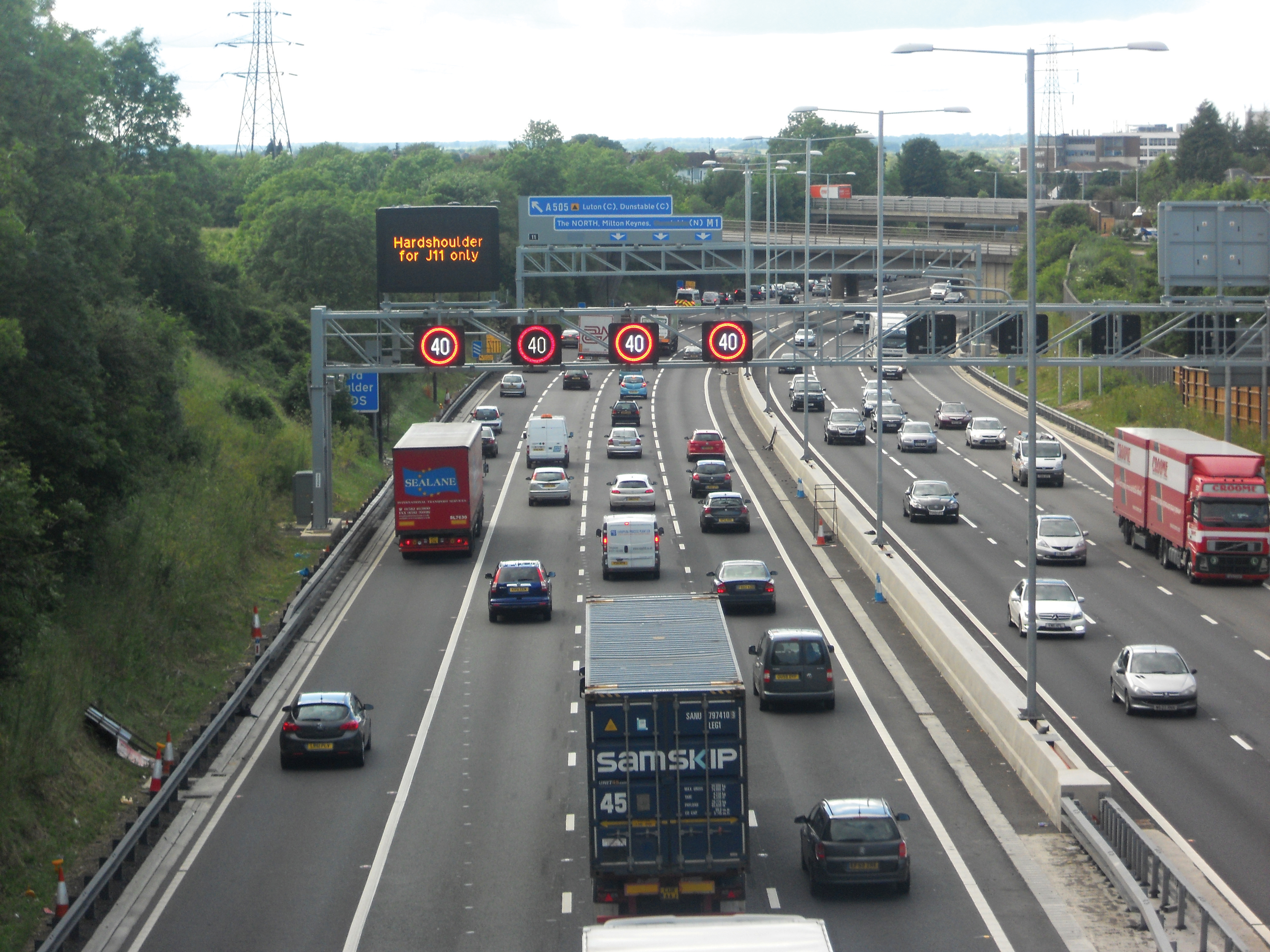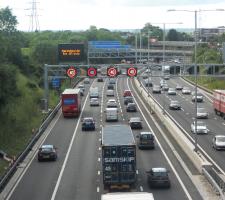
Conservatism is hampering the technical evolution of operating concepts such as Managed Motorways, says Lanigan
Nick Lanigan, managing director of Clearview Traffic, considers the current outlook in the ITS sector from an SME's perspective. Interview with Jason Barnes.
When times are hard, businesses can invest or cut. Either way, they need guidance from customers – governments – on where best to concentrate their efforts.Prolonged economic slowdown is currently an issue. A short recession, however sharp, would have left many industry players able to ride the bow-wave of governments’ multi-year spending on strategic projects but ongoing difficulties and the global nature of modern economics have resulted in ‘contagion’.
Many governments have gone tactical, putting off longer-term decisions to balance the books. The problem is that such measures provide industry with little or nothing in the way of medium or long-term guidance.
This hits small and medium sized enterprises (SMEs) hard. They can lack the sheer mass needed to see them through, to emerge diminished but still functioning or to allow them to bargain on favourable terms with lenders.
Market comparisons
The UK Government’s recent announcement of major new infrastructure spending, although welcome, has put little meat on the bone for roadmapping new and future products; nor has it allowed identification and cultivation of the key partners needed to win bigger contracts, he says.
“We have a strong reputation and recurring revenue but we’re not yet punching the air over infrastructure projects announced in our home market. The UK remains comparatively flat. Brazil is growing significantly and preparing for the 2014 Soccer World Cup and the 2016 Olympics. We’ve definitely got one eye on that. Australia seems to have managed to avoid global recession and significant infrastructure upgrades are necessary across Eastern Europe,” Lanigan says.
He observes particular needs: “Brazil is working hard to improve urban mobility but there’s a lack of intelligent infrastructure, such as journey time and traffic flow monitoring. Such developments are going to be fundamental. Eastern European countries are recognising the importance of cross-border trade and bringing infrastructure up to international standards.”
The BRIC countries and other developing markets might be looked at with avaricious eyes but there are lingering issues. Lanigan says: “Brazil’s imposition of import duties makes in-country manufacturing or partnering essential. For developing countries to believe that they can go it alone on the technological front is naïve and they should be fostering an environment which will allow SMEs to participate. It’s hard enough to compete as it is; we don’t need barriers to trade as well.
“India is undergoing huge changes but major contracts’ gestation periods are a problem. It can take two to three years to see opportunities turn into something tangible. SMEs with finite resources can’t afford to concentrate on such opportunities.”
Strategically, Eastern Europe might seem a better bet – in Clearview’s case, it’s only a couple of hours away on a plane and would build logically on the company’s existing network of partners in Western Europe, but the shadow of corruption looms large.
“Market selection is more about identifying risk and securing payment. Some developing countries have to get beyond ‘historical’ ways of doing business,” Lanigan says.
Stifled innovation
Technical conservatism is rife. In the UK, Lanigan adds, the Type Approval process for new technologies is too unwieldy: “Something needs to happen there. Two years to go through the cycle for adoption is too long.“I’d like to see some of the bigger companies, particularly those building and operating infrastructure, championing new concepts and helping to push them through the approval process. For example, the next phase of the UK’s Managed Motorways (hard shoulder running) rollout is underpinned by inductive loops and while there is active dialogue and agreement that this needs to change, progress is slow. Do we really need 99% accuracy? Bluetooth can produce credible journey time results with a 40% sample, so are we pursuing data for data’s sake? Clearview has technology that can add value right now but there’s been limited enthusiasm for it so far.”
This is compounded by the lifecycles of products and technologies in different sectors, such as telecommunications and automotive, not supporting a more coordinated approach. This probably represents the biggest barrier to progress outside of political influences, Lanigan feels.
He also worries over the move to bigger framework contracts in Clearview’s home market: “I can see the logic of getting best value for money but it means that smaller companies cannot front tenders. That causes a downward pressure on innovation and it puts the smaller guys at the mercy of the big players; framework sign-up is more about having to be at the table than agreeing with the strategy.
“This has happened in other sectors, but in ITS, with the complexity involved, I’m not convinced that ‘one size fits all’. Internationally I see much more in the way of competitive tendering, which gives much more opportunity for the smaller businesses which innovate.”
Financing
Lanigan is one of many who feel that private finance initiatives (PFIs) have had a bad press. “PFIs can deliver good value and innovation if they’re formulated properly and I wonder if governments are trying to push too much of the risk onto the private sector. That’s an international problem. Perhaps there need to be other ways of gaining private-sector finance. That needs more discussion.“Road user charging policy comes and goes; realistically, it’s the only sustainable model in the long term. The key will be how it is integrated into the ITS infrastructure of the future, but again, on finance a clear steer is needed. I run an SME. Day to day, my focus is on cash flow. Making the right decisions on where to invest any spare cash is crucial.”
Shaping the future
Looking forward, Lanigan says, the days of the owner-managed SME are past. Competition has given way to collaboration. Vehicle-to-vehicle and vehicle-to-infrastructure development is an area where Clearview can offer a lot of supporting technology, but for this the company has to identify strategic partners, which makes the role of the industry’s national trade associations all the more important.“Organisations such as ITS-UK and its peers bring people together to promote information sharing and best practice, through seminars and other events, and by organising and hosting foreign exchanges. Clearview has found this valuable but there still needs to be a more strategic approach and a look at how we in the industry can use our expertise more effectively.
“On the flipside, the industry collectively has to step up and support the associations more – and I mean something beyond just paying annual subscriptions. I’d like to see better recognition at the higher levels of government of the work that the associations do and the expertise they represent, but there has to be greater collective effort from within.
“The ITS market is increasingly complex and role of the SME’ is going to change. Some could disappear through acquisition or dissolution and I think we could end up with a much more top-heavy situation than we have now. That makes an international presence through collaboration and diversity all the more important.
“The recent UK Technology Strategy Board initiative to establish a catapult centre for ITS should provide a good vehicle to promote such collaboration in the UK and beyond. Clearview hopes to play an active role in this, which aligns well to Clearview’s open innovation strategy and the benefits could be significant for all.
“One thing is certain, in uncertain times you cannot do business from behind a desk and just rely on traditional hardware sales to see you through. Interesting times lie ahead for all of us.”













